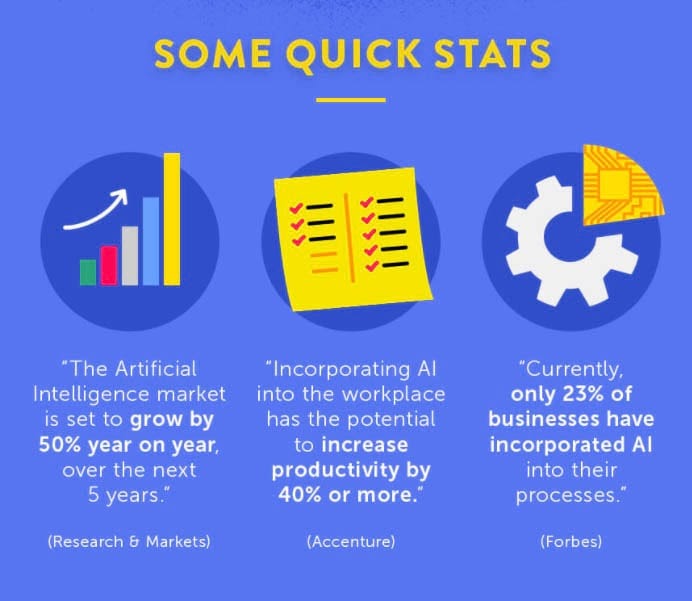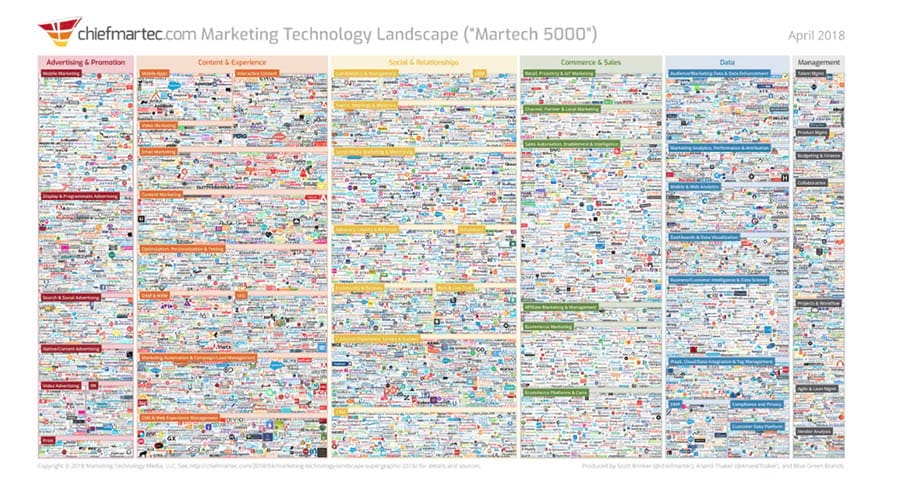2020 was an unprecedented year by all accounts, throwing challenges at businesses most could never have imagined, let alone planned for. Thankfully just three months into 2021 and some semblance of normality seems to be returning — albeit with caveats.
Many of us have had to make drastic changes to the way in which we operate. Many of us work with customers or clients who have had to do the same. The effects of this will continue to be felt long after normality has resumed, and this includes how we market ourselves.
Digital marketing is always evolving. Every year new trends appear. Existing tactics start to gain traction. And others are resigned to the dustbin.
2021 is somewhat different.
Not because there are no changes. Far from it. But because many of the things driving change have not been seen (at least on the sort of scale seen in 2020) since long before the advent of the internet.
If we are to learn anything from this, it’s how important it is to future-proof our brand against the unexpected. To increase brand loyalty. To diversify. To be ready to adapt. And to market ourselves harder and smarter.
On that last note, here are 10 of the most important digital marketing trends to pay attention to in 2021.
1. More Companies Adopt AI Technology
We’re sure you’ve heard of AI and Machine Learning — but did you know it’s more accessible than ever to businesses on a budget?
AI will power the future of digital marketing, and 2021 is when we will see it take off. Marketers can use AI for:
- Content creation (yes, some content doesn’t need a human writer)
- Personalization marketing
- Chatbots that can provide customer service
- SEO software that can write thousands of product descriptions in a matter of minutes
- Marketing automation
A word of caution as you start to look at how you can apply AI to your digital marketing, however. Some companies use the phrase without actually applying any AI to their service. Be wary about these tools’ outputs and never invest without thoroughly checking what is produced on the other side.
While it may seem like a great way to save money and resources, consumer AI is still in the early stages of its development.
That said, it’s a good way to get ahead. Look at this data collated by Adzooma.

2. Easy-to-Consume Content Will Become More Prevalent
As any content marketer knows, Google has always said that content is king.
Over time some studies have shown that longer content performs better. But these studies have one problem. They’re rarely based around a particular set of search results or niche. And this makes the results a little misleading.
Marketers have created epic guides and content pieces that go over the much-loved 1500 wordmark. But there’s more nuance than that.
You need to know what works in your vertical. What helps you convert visitors into customers.
With the advent of passage-based ranking from Google, we have seen a shift. What was gospel (as far as marketing experts were concerned) is no longer necessarily true. Google is able to not only look at different sections of a site from a different perspective, but also the singular pieces of content themselves.
Forward-thinking digital marketers have seen this and are already adjusting older content to more closely emulate what ranks well.
While it is mainly anecdotal, we’ve seen that the easier content is to consume, the better it tends to perform.
When we say easy to consume, we are talking specifically about:
- Content that answers specific questions rather than being an epic guide
- Content that is broken down into distinct sections
- Content that is visibly more appealing
- Content that serves a purpose for the user and guides them to take the actions that they set out to achieve
Expect to see a lot more of this in 2021 and well into the future.
Related: How to Create a Content Marketing Strategy
3. Culling Social Media Channels Will Be On Social Media Marketers’ Minds
What? Getting rid of social media channels is going to be a marketing trend in 2021?
We have seen a recent resurgence of brands like Chase and Uber completely turning off paid digital ads, with no drop in custom or revenue. In 2021, expect to see an increasing number of brands follow suit and move partly, if not entirely, away from paid social.
For years brands thought that the more channels they were on, the more business they would drive. It’s apparent that this just isn’t sustainable. You need to be more selective.
It’s not surprising when you look at how many social channels you *could* be on.

Do you want to pull all the social media channels out of this tech stack?
As marketers gather even more data to help them figure which channels actually add to the bottom line, expect them to start culling the ones that just don’t give them an ROI.
Related: Facebook, Twitter, or Pinterest? Choose the Best Social Media Platform for Your Business
4. UGC to Enhance the Customer Experience
UGC (or User Generated Content) has a bad reputation in digital marketing. Traditional pieces of content were left open for others to contribute to, often without moderation. This can lead to many issues — specifically trust issues on Google’s part (more on this later).
But it’s seeing a resurgence; not just on websites but on social channels as well.
By offering incentives like discounts and freebies, brands can tap into their audience — the people who already love their brand — to spread their message further and more effectively.
When there’s so much noise across digital marketing channels, it becomes less about the brand and more about the people who already use it.
Add to this that it cuts down on the amount of content that digital marketers have to produce, and it’s a win-win situation.
Related: How to Promote & Market Your Website With Influencer Marketing
5. Virtual Events Are Going to Be Sticking Around
In 2020, we didn’t have a choice.
If we wanted to put on an event or a conference, it had to be virtual. If we wanted to attend a conference or event, it had to be virtual.
COVID-19 has changed events forever. While events and conferences will return to the real world at some point, many organizers are likely to keep them virtual (or at least do a mix between in-person and virtual events). There are mutual benefits to this:
- Virtual events are cheaper to put on and thus less expensive — if not free — for the attendees.
- There are no geographic restrictions — a virtual event can be attended from anywhere in the world with a decent wifi connection. This benefits attendees, but it also benefits the organizers, who have a bigger talent pool to pull from when it comes to speakers.
- As people get more used to virtual events, it becomes possible for smaller companies to put on events when previously, the costs were prohibitive.
- Niche events that would have been harder to put on due to small audience numbers can go ahead when conducted online.
We all want to return to some kind of normality. We want to be around people (well, some of us), but there will be a bigger choice of events. That befits the consumer and the attendees much more.
Related: How to Create a Website for Your Event (In 4 Steps)
6. Increase in Voice and Visual Search
When reports show that around 55% of American homes will have some sort of smart speaker in their home by 2022, you can see why this will be an emerging digital marketing trend from 2021 onwards.
Savvy marketers know that voice search will be critical in the future if you want your customers or prospective customers to know who you are and what you stand for.
Voice search is about branding and delivering value-based content to your customers.
For some brands, visual search will play a more significant part in their strategy and start to come into its own in 2021.
When you have brands that are embracing Pinterest Lens and Google Lens, you need to stop and think. If they are seeing success, how are they doing it? How are they using it to drive business?
Visual search will be big moving forwards, and if you’re in a niche like fashion, beauty, food, or home decor, you should be keeping a close eye (no pun intended) on developments. You might not need to be the maverick or the pioneer, but you need to be an early adopter if you want it to work for your brand.
7. Google Core Updates and EAT
Google has been especially busy in the last few years, striving to make sure that their search results are as relevant as they possibly can be. While this has always been their mission, they seem to have ramped it up recently.
There have been several significant changes to their algorithm in the last three years — referred to as Core Updates. While your typical site owner might not be aware of these, most digital marketers are.
If you want to find out if your site has been affected, you can check using this nifty tool. Simply pop in your domain name to see if you’ve won or lost with each of these updates.

But how are domain owners and websites making sure that their business stays on top of these updates?
That’s a little more difficult — especially when Google doesn’t explicitly say what changes they’ve made. That said, you can read between the lines when they share things on their Google SearchLiaison Twitter account.
Webmasters and SEO specialists have been concentrating on improving their sites with several tactics.
Trying to Improve E-A-T on Their Sites
Yeah, it sounds odd, but it stands for Expertise, Authority, and Trust. Put simply, this is about increasing — or at least demonstrating — that you are an expert in your field. That your content should be considered more authoritative than content from others in your niche.
We don’t have enough time to go into it here, but you can read more about E-A-T in these articles:
- E-A-T and SEO: How to Create Content That Google Wants
- What is EAT? Why It’s Important for SEO
- What are EAT and YMYL: New Google Search Guidelines Acronyms
Improving Website Usability
In other words, paying more attention to the user journey and tweaking your user experience (UX) in response. Google wants to reward sites that give the best possible experience when on their site, so this is one (very important) way of helping your site move up the rankings.
Expect both of these to be vital for your SEO strategy in 2021 and beyond — especially when Google rolls out Core Web Vitals[a] as a ranking factor later this year.
Search Engine Optimization Made Easy
We take the guesswork (and actual work) out of growing your website traffic with SEO.

8. SERP Features Become Even More Important
For several years, Google has included a wealth of new features across both mobile and desktop. The cynical digital marketer will say this keeps users on Google for longer, so more ads can be served. But it’s not that simple.
They serve another purpose. They are genuinely useful for the user (never forget that Google’s original focus was “to organize all of the world’s information.”)
The most common Search Engine Result Page features include:
- Featured snippets
- Knowledge panels
- News boxes
- People also ask
- Shopping results
- Site links
- Image packs
- And much, much more

As real estate in the search results gets increasingly scarce, you can be sure digital marketers will work out the best way for the websites they work on to get more visibility.
Over the last few years, we have seen lots of guides to getting featured snippets for sites, in order to secure the top spot for any given search query. But more and more marketers are now looking to see where else they can gain visibility.
As long as the SERP features they rank for drive traffic and revenue, marketers will try to capitalize on them.
Keep an eye out for new features when launched, and skate where the puck is heading.
9. SEO Testing Will Become More Prominent
Many digital marketers have been investing in CRO (Conversion Rate Optimization) for years, and rightly so. It helps generate more revenue (or leads) from the traffic you’re already getting. What’s not to love?
Unfortunately, testing for search engine optimization has recently become somewhat problematic. However, some big companies found workarounds. Take Pinterest and eBay, for example. You can read about their testing and experiments here:
- Demystifying SEO with experiments | by Pinterest Engineering
- Second Page Poaching and Technical SEO at Scale
However, implementing this sort of strategy is tough without a big team. As a result, numerous platforms have popped up that make testing more affordable and accessible, creating opportunities for smaller businesses to jump on the CRO bandwagon. These typically use either Google Search Console data and A/B testing.
While some software is still a little expensive for the average business (like SearchPilot), several cheaper options make it really easy to roll out experiments and then apply learning to other parts of your sites or other sites entirely.
If you want to find out more about how SEO testing works, you should check out these tools:
You can be sure that many digital marketers are already doing so and helping their businesses or clients get better rankings in the search engines.
10. More Brands Start Using TikTok
TikTok — it’s everywhere, right?
We’ve saved the most contentious trend for last on purpose. Tik Tok gets a bad rep. There have been issues with censorship and bans in some countries. But you can’t deny its growth.
Some social platforms come and go, and you can’t keep an eye on them all — never mind having your brand on them all (see No. 3). But Tik Tok seems here to stay and has been embraced by younger and older generations alike.
Tik Tok isn’t going to be suitable for every brand, but it will be a valuable acquisition channel for some. As 2021 continues, we think you should be keeping a close eye on how bigger brands fold Tik Tok into their social media marketing campaigns and what you may be able to do to emulate their success.
Marketing Insights in Your Inbox
Whether you need help finding a target audience, choosing a social media channel, or increasing brand awareness, we can help! Subscribe to our monthly digest so you never miss an article.

What’s Your Digital Marketing Strategy?
2020 was a tough year. 2021 offers hope. Many brands that struggled through the last 12 months are starting to recover.
But this doesn’t mean we should rest on our laurels. We need to learn from the events of the last year. We need to understand that getting too comfortable is dangerous — that we can never predict what’s around the corner.
And we need to embrace change. Both in how we operate and how we market ourselves.
- Adopting AI technology
- Being smarter about the social channels we invest in
- Changing our approach to content creation
- Welcoming user-generated content
- Being virtual where possible
- Considering voice and visual search
- Paying closer attention to Google’s updates
- Targeting more SERP features
- Boosting conversions via testing
These are all things that will help shape digital marketing over the next 12 or so months. Don’t fall behind. Embrace them. Use them. And hopefully, we’ll all see the success we deserve in 2021.
The post 10 Most Important Digital Marketing Trends for 2021 appeared first on Website Guides, Tips & Knowledge.
source https://www.dreamhost.com/blog/digital-marketing-trends/

No comments:
Post a Comment